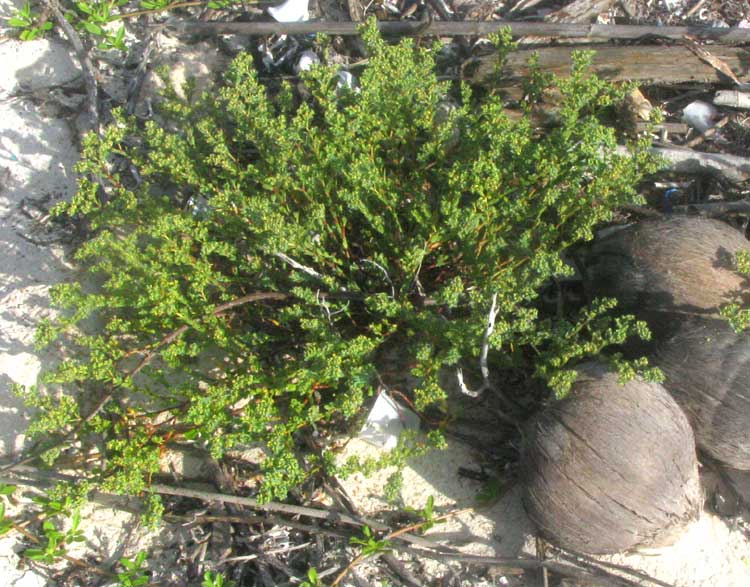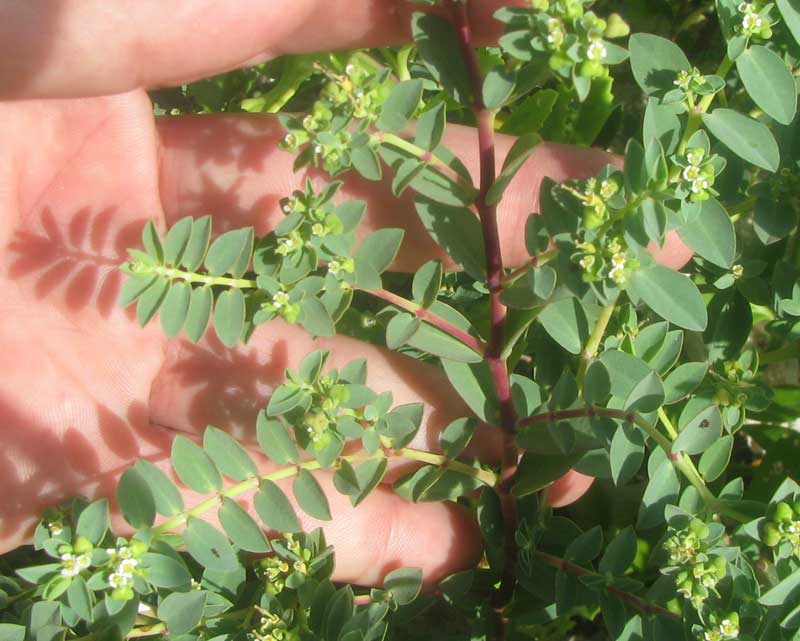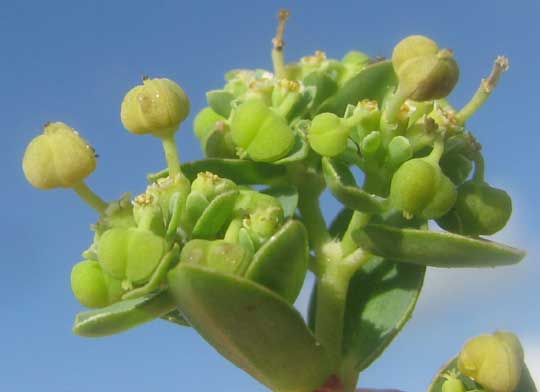Excerpts from Jim Conrad's
Naturalist Newsletter

from the October 9, 2011 Newsletter issued from Mayan Beach Garden Inn 20 kms north of Mahahual; Caribbean coastal beach and mangroves, ~N18.89°, ~W87.64°, Quintana Roo state, MÉXICO
SEA SPURGE
Nowadays along our white-sand beach, where salt-spray makes it especially hard for other plants to survive, there's an ankle-high, much-branched, semi-woody, spreading, ground-hugging euphorbia flowering, as seen above.
In that picture those are washed-up coconuts, for scale. Also, notice that this euphorbia's leaves are silvery green, not deep green like the downspout one. A closer shot, showing little leaves neatly aligned along each side of a semi-succulent stem is shown below:

The obligatory showing the typical euphorbia flower strategy of having the ovaries on their stalks hanging outside their cyathia (cuplike feature composed of calyx and corolla) is seen below:

One reason I keep returning to these euphorbias is that I really like the "variations on a theme" thing. The euphorbias came up with something unique that worked for them, and then they went wild with their concept. Wikipedia's euphorbia page says that there's 2008 species of them. There are so many variations, but they all display the same fundamental euphorbia- flower strangeness...
Euphorbias in general often are referred to as spurges. Our beach species sometimes is called the Caribbean Sea Spurge, but the USDA names it Coastal Beach Sandmat. It's EUPHORBIA MESEMBRIANTHEMIFOLIA, mesembrianthemifolia meaning "having leaves like Mesembryanthemum, which is a South African wildflower with leaves like our plant, but large, gaudy flowers as well. Caribbean Sea Spurge is native to southern Florida, the Caribbean, coastal Central America and northern South America.